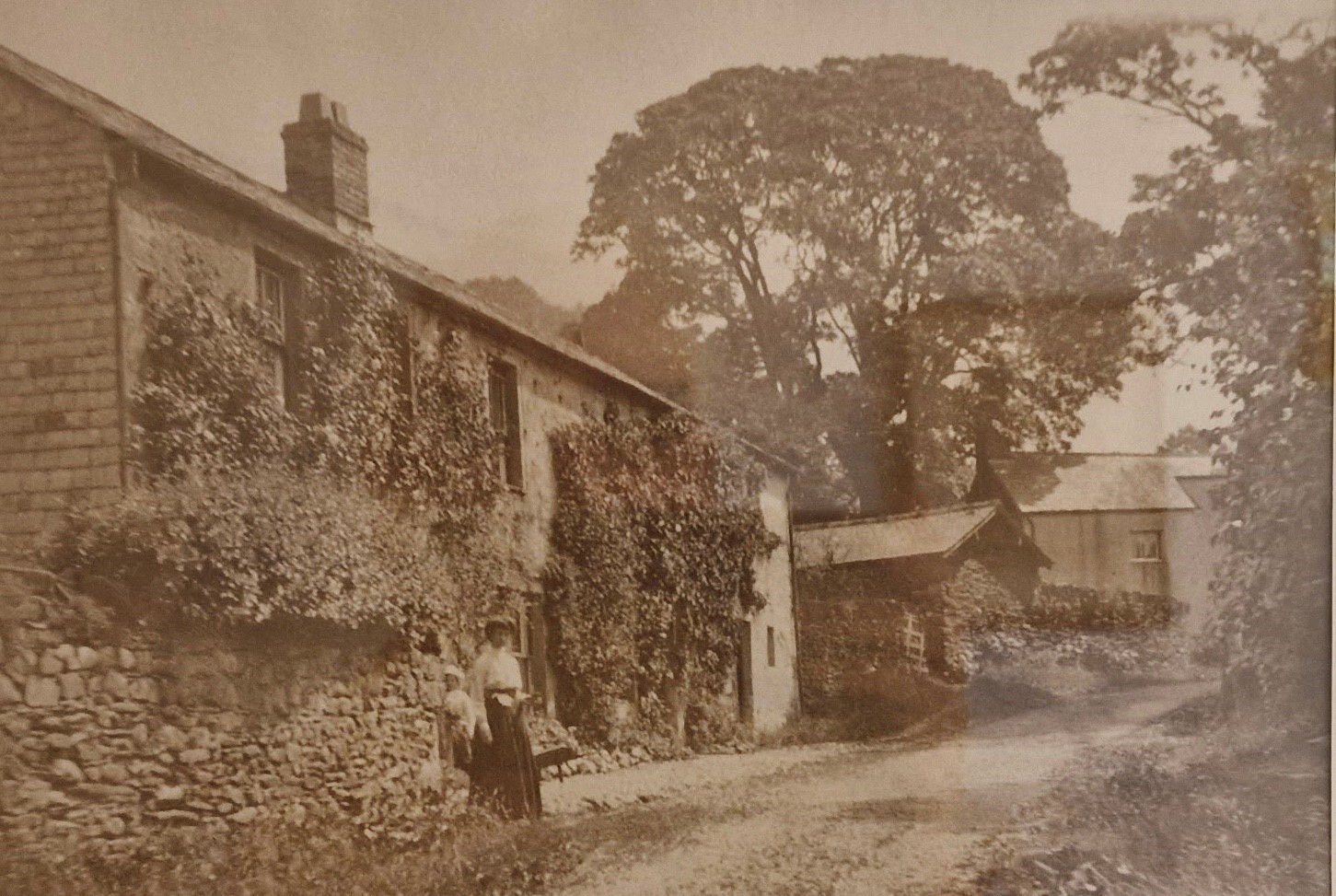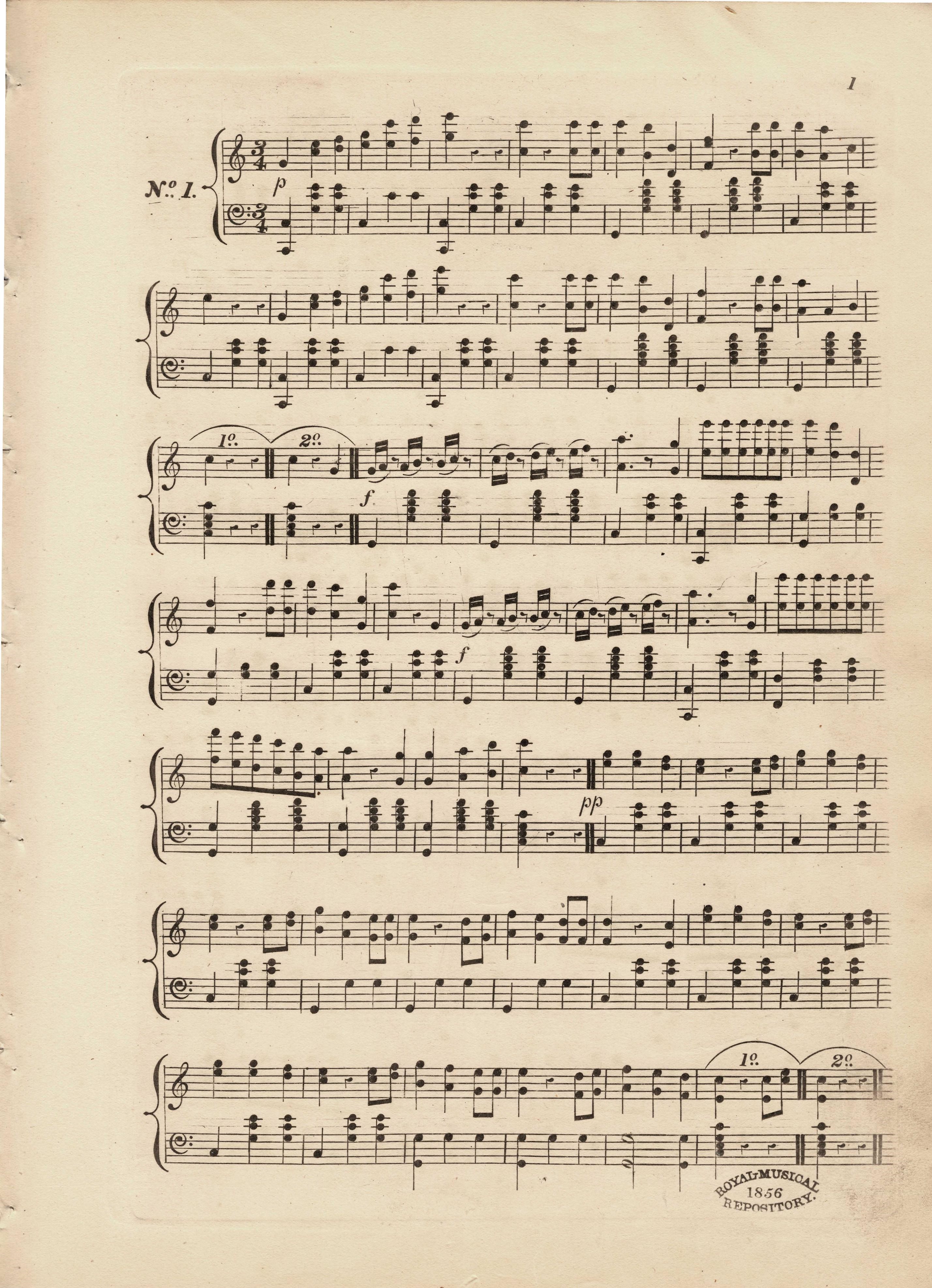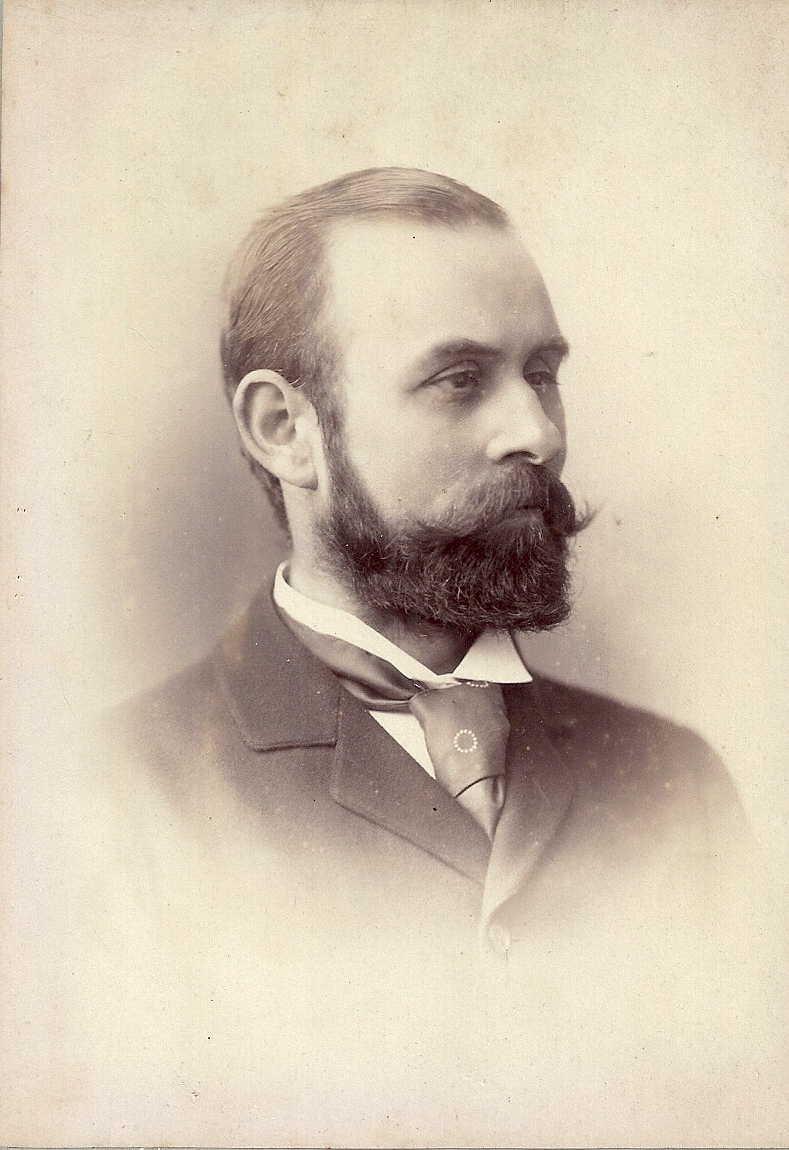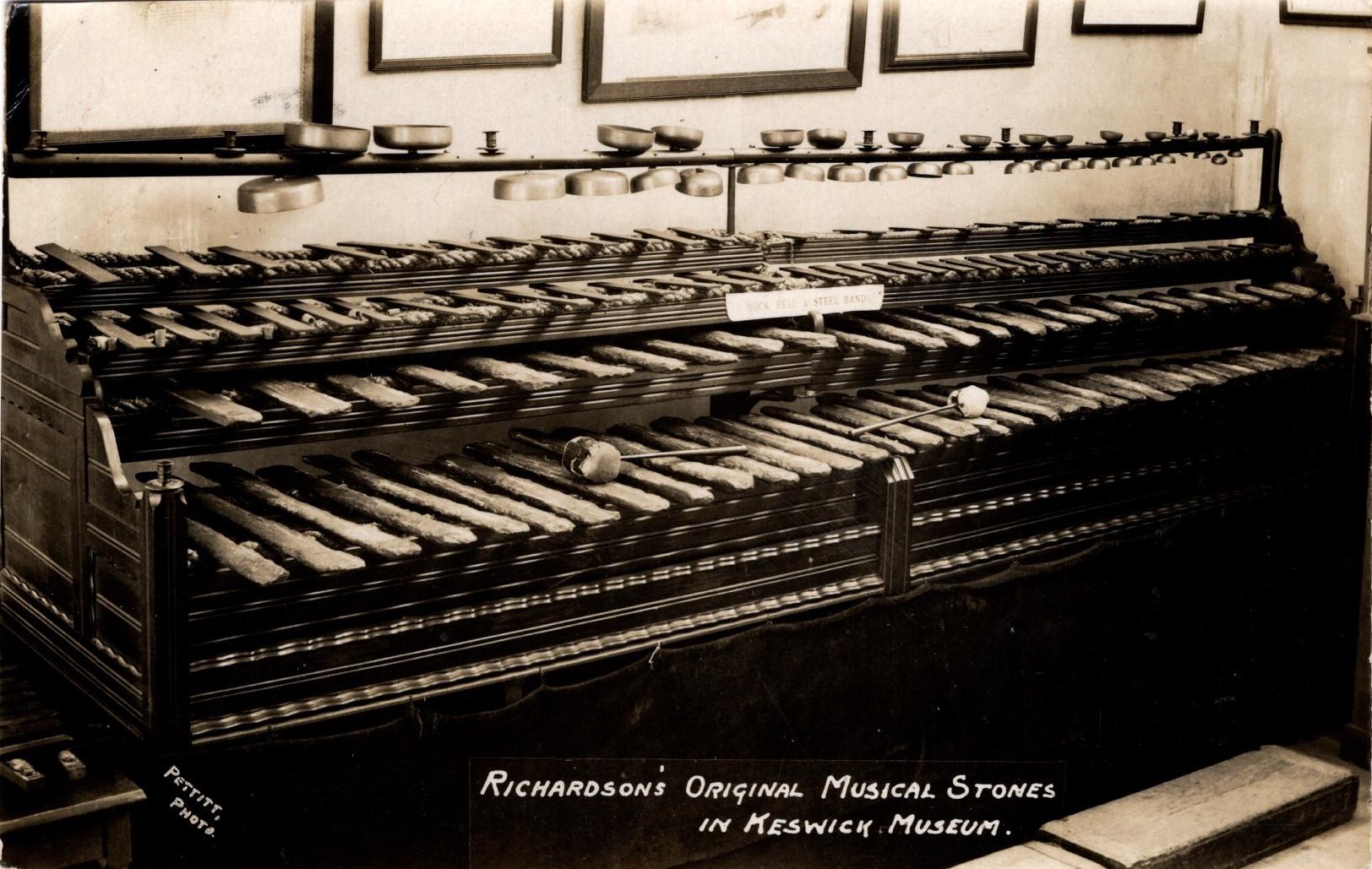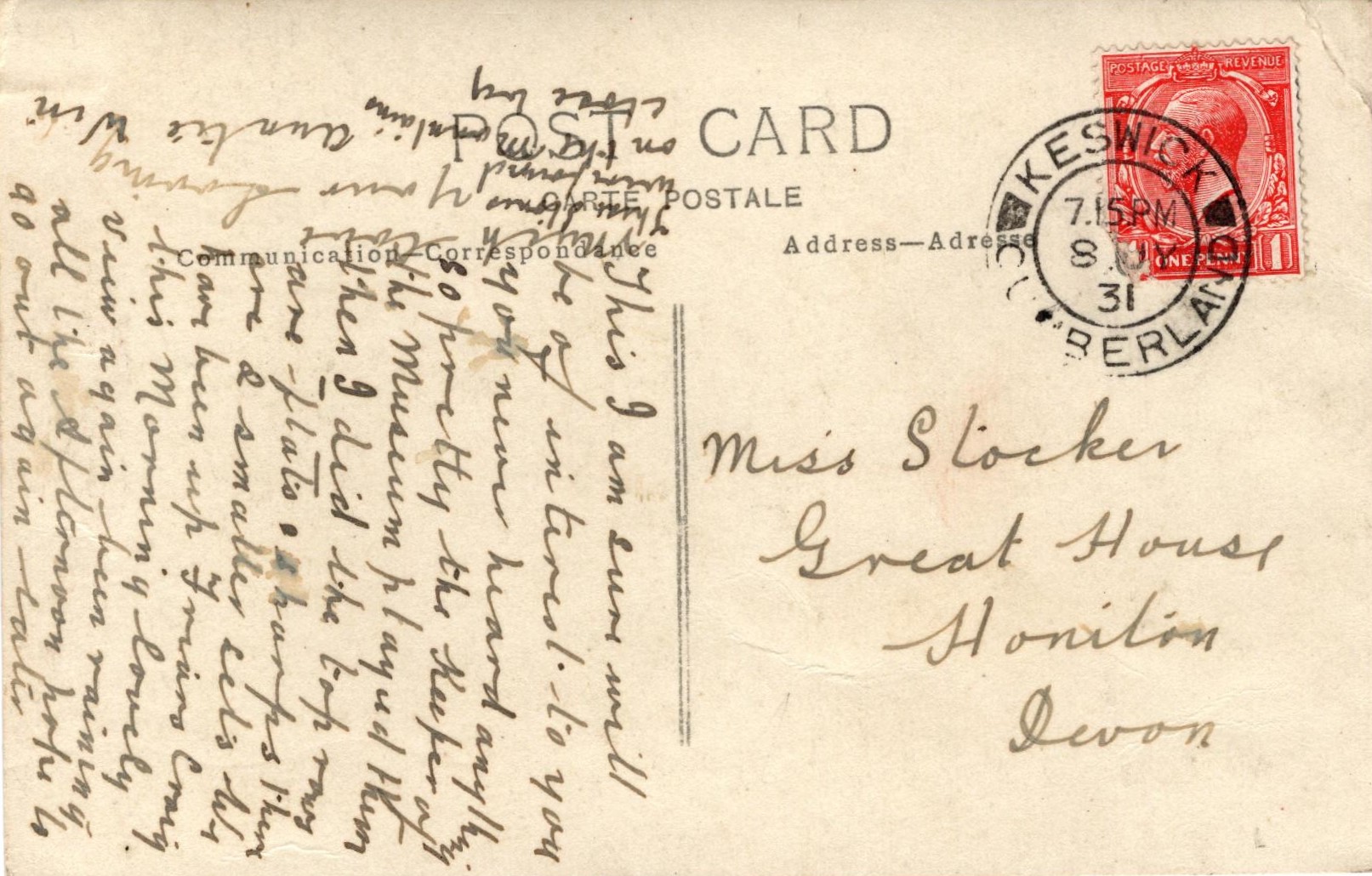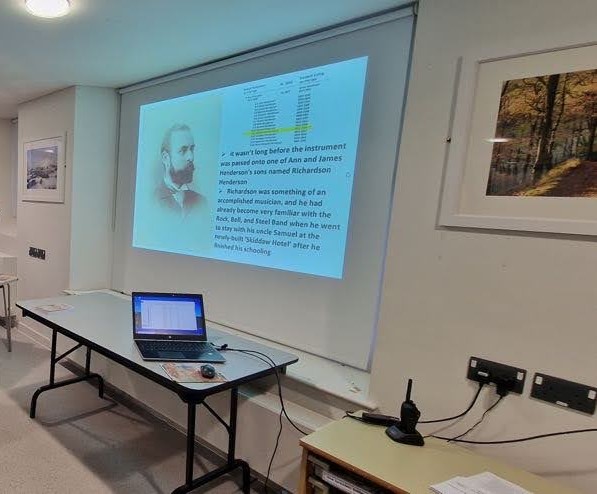Joseph Richardson and Sons 'Rock, Bell, and Steel Band'
the World’s First Rock Band
from the famous 'Musical Stones of Skiddaw'
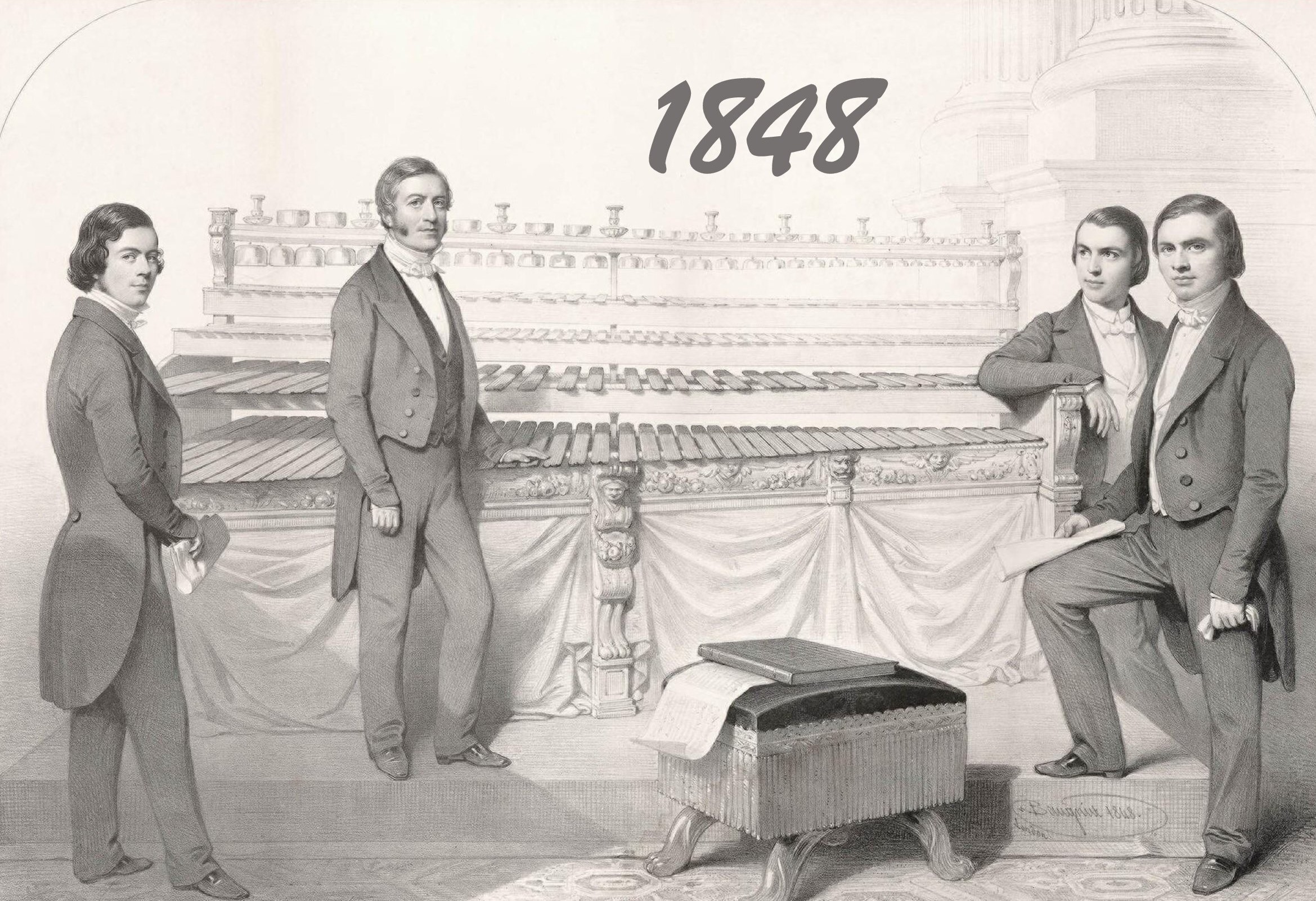
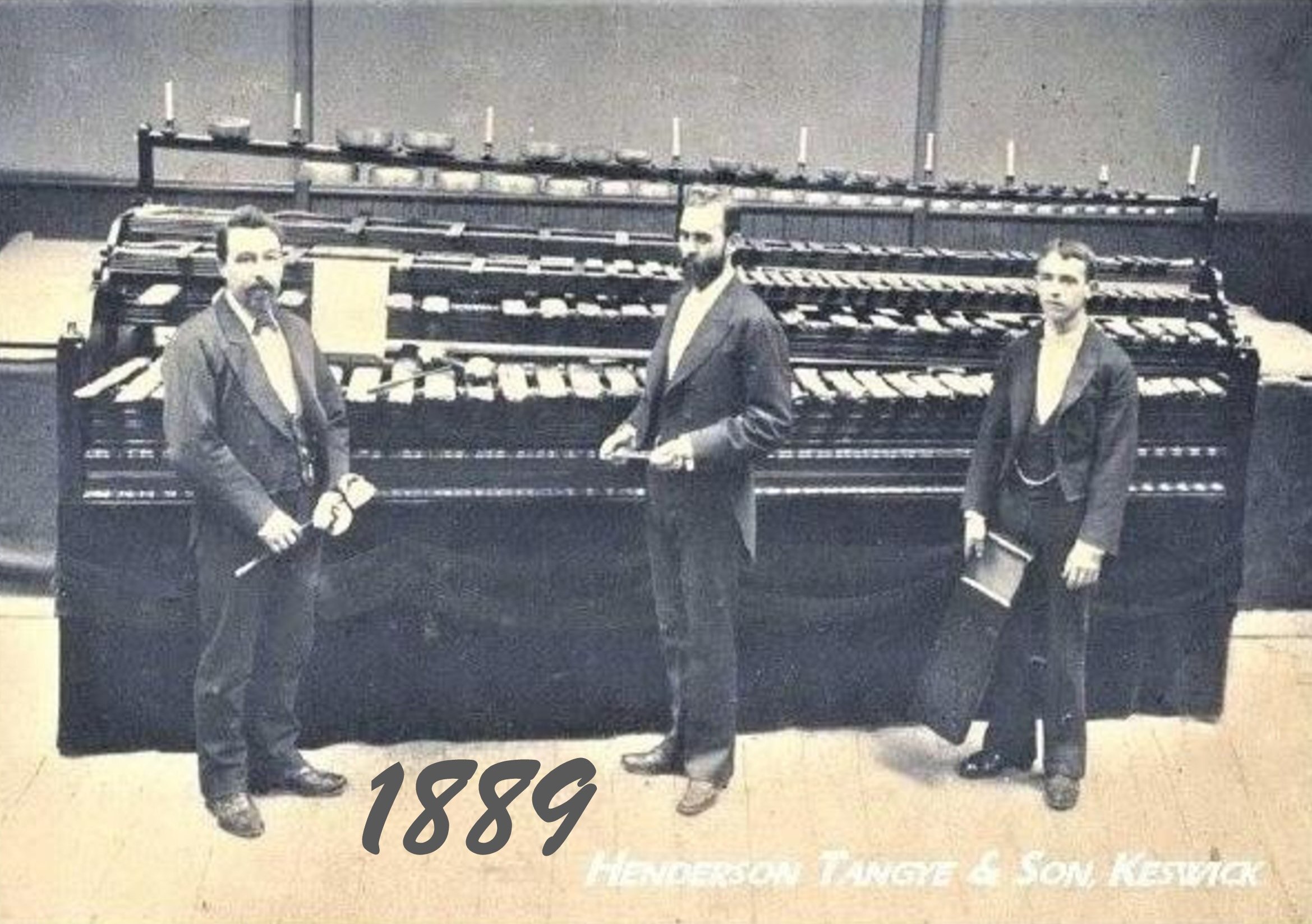
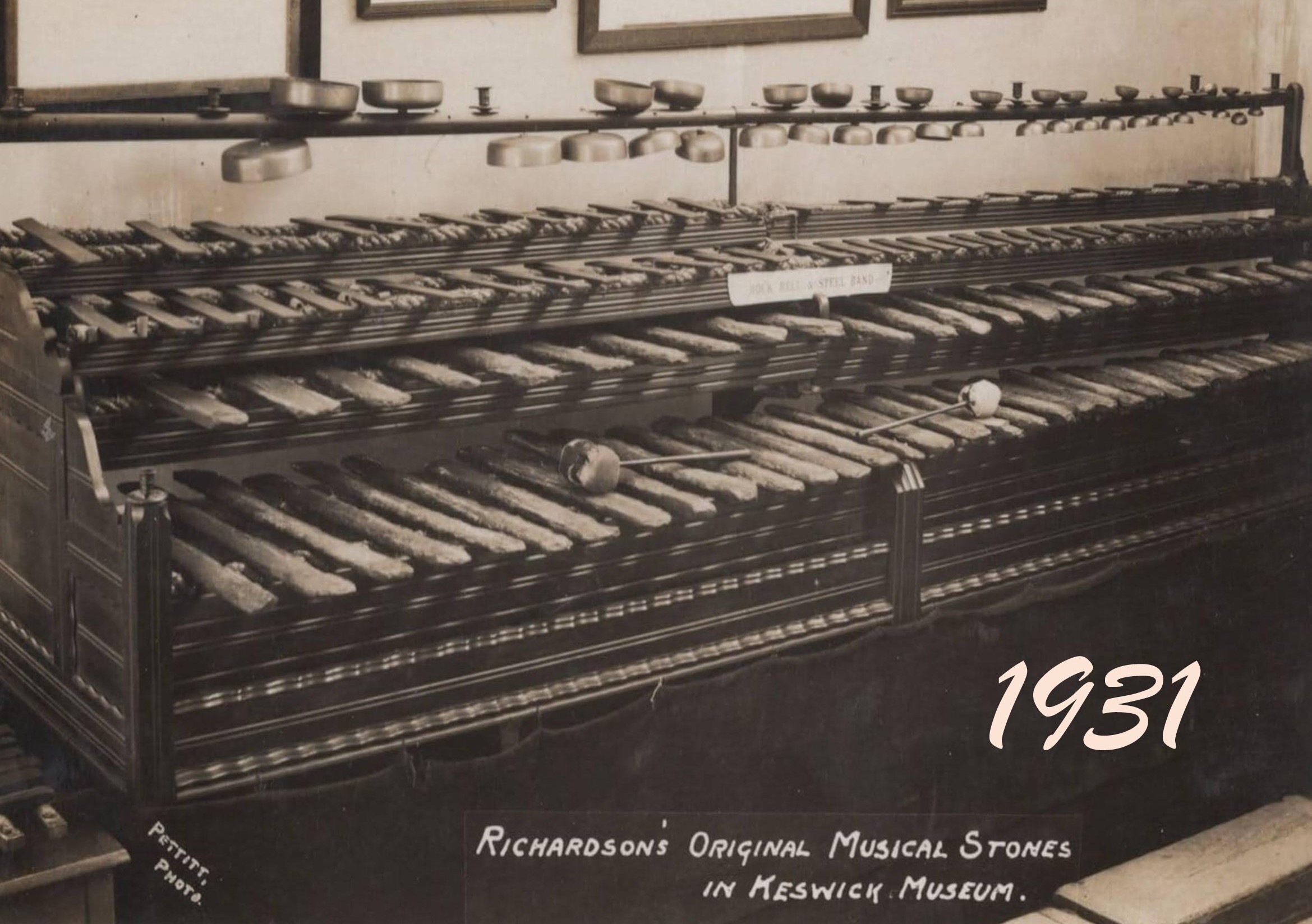




The Keswick Low Corn Mill, 1823-1836
“To be sold, by auction, at the house of Mr. Jos. Bowe, Innkeeper, Keswick, on Saturday, the 22nd of October next, at Six o'Clock in the Evening, all that excellent Corn Mill, situate on the River Greta, about Two Hundred Yards from the Main Street, in Keswick. The Gearing of the Mill comprises One good Breast Water Wheel, One Pair of French Burr Stones, One Pair of Grey Stones, a Barley Mill, Dressing Machine, Machine for Dressing Flour, a Pair of Iron Malt Crushing Rollers, Indigo Mill, and Hoisting Tackle; Drying Kiln with Cast Iron Tiles, Wash-house adjoining, with Lead Pump and Large Boiler; the whole being in good repair. Also the Land behind the Mill, adjoining the River; and a Plot of Land adjoining the Mill, and situate between the Mill Race and the River, containing about 630 Square Yards, the Frontage against the River being about 48 yards. The advantageous locality of the above Property renders it a safe and eligible investment for capital. The whole Property is Freehold, and immediate Possession may be had.
The Premises may be seen on application to Mrs. Jane Richardson, of Keswick, the Owner; Mr. Thomas Richardson, or Mr. H. Powlay, of Keswick; and further particulars may be had of Mr. Robert Richardson, of Cockermouth; and Mr. Ansell, Solicitor, Keswick. Keswick, 26th September, 1836."

Joseph Richardson, born c. 1792
"You (Joseph Richardson) were perfectly aware of Mr. Crosthwaite’s discovery before you ever thought of collecting stones for your instrument. You lived at Keswick for some time in the house adjoining, and afterwards in a house opposite to the museum. You must therefore have heard them frequently. You also know that Mr. Wm. Greenip, naturalist of Keswick, collected a set of musical stones in imitation of the original; and upon these, he states that you frequently amused yourself, years before you ever collected any."
"He (Joseph Richardson) was a musician by nature, and of considerable practice also, in his way, for he could play on three instruments – the violin, the flute, and the pipes, and gained considerable money, occasionally, by his performances on the former at musical and other parties."
“One incident in Joseph Richardson’s early life is interesting as showing the trend of mind that led up to his masterpiece. His mother had a mahogany-topped table of which she was very proud, and you can imagine for yourselves the awful row there was when she found one day that Joseph had sawn her beloved table up because “he wanted to make a fiddle”.”
Image of Joseph Richardson, above (© John Phillips)
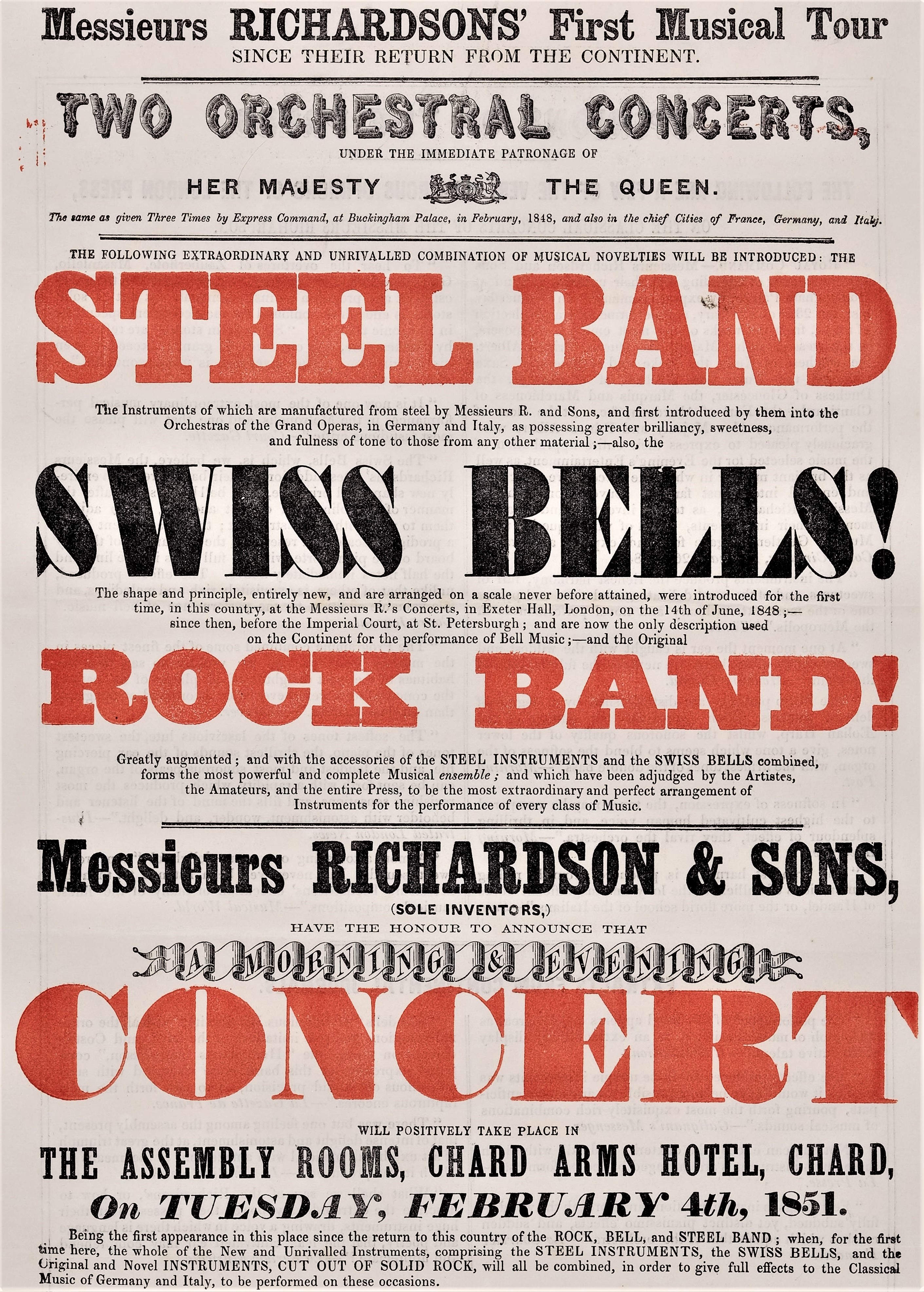
The Steel Band, The Swiss Bells and The Original Rock Band, 1848-1852
“THE STEEL BAND – The instruments of which are manufactured by Messrs. R. and Sons, and first introduced by them into the Orchestra of the Grand Operas, in Germany and Italy, as possessing greater brilliancy, sweetness, and fulness of tone, to those of any other material; also, THE SWISS BELLS – Arranged on an extensive scale, and introduced for the first time in this country at the Messrs. R.’s Concerts in Exeter Hall, London, in June 1848; since then, before the Imperial Court at St. Petersburg; and are now the only description used on the Continent for the performance of Bell Music; and THE ORIGINAL ROCK BAND – Greatly augmented; and with the accessories of the Steel Instruments and the Swiss Bells combined, form the most powerful and complete Musical énsemble. And which have been adjudged by the Artistes, the Amateurs, and the entire Press, to be the most extraordinary and perfect arrangements of Instruments for the performance of every class of Music.”
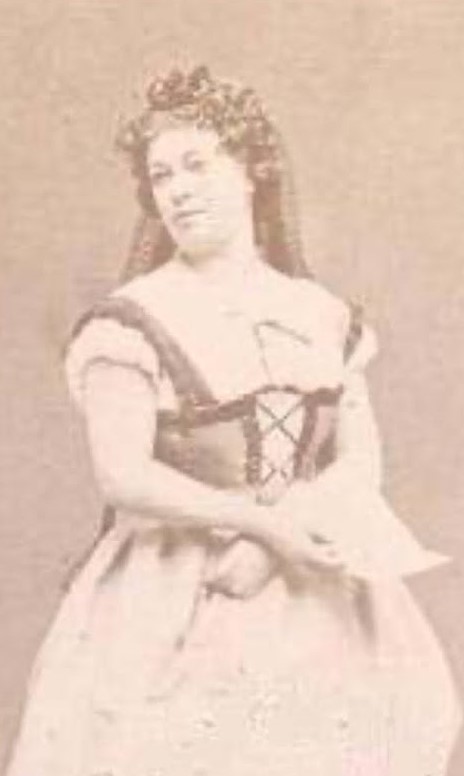
The Julia Gould "Tour Musicale", 1848-1849
“In engaging Miss J. GOULD for their Concerts, the Messieurs RICHARDSON cannot avoid remarking to the Amateurs of Music that first-rate Vocalists are generally accompanied by a Pianoforte only; this system generally injures the effect of pieces written by the great composers for a grand Orchestra, which advantages are now secured to Miss Gould by being accompanied by Messes. R.’s Band. The Messrs. Richardson beg to state that having recently made great additions to, and improvements in their Band, it is now more complete than ever; and that for the first time in the Provinces, the Catavina’s of Bellini, Rossini, and Verdi, will be sung by Miss Gould, accompanied by the Rock, Bell, and Steel Band.”

The Festivities at Lismore Castle, 1851
“A grand entertainment took place. The Messrs. Richardson and Sons had the honor of performing on their powerful and brilliant Rock, Bell, and Steel Band, before His Grace, the Duchess of Sutherland, Lady Constance Gower, the Hon. G.F. and Lady Cavendish, and a party amounting to nearly one hundred. The London press speak rapturously of the superior powers of this very extraordinary troup. – The rock portion of their band, is found in some mountain fastnesses in Cumberland, and the powers of harmonious modulation it displays, are really wonderful. The Messrs. Richardson are making a musical tour through Ireland, and purpose visiting Waterford in the ensuing month. – Their pianissimo passages play most witchingly on the ear, and the fulness of tone (without any approach to shrillness) in the fortissimo, is equally grand indeed; whilst the powers of execution displayed by the performers, evince superior talent.”
The End of the Road, 1852
“The Messrs Richardson had proposed to proceed from this town, in continuation of their musical tour, giving, during their progress, concerts in several of the towns, but one of the brothers became so seriously ill, on Saturday last, on the way from here to Borrisokane as to compel his return; since then he has been confined to his room. Under the charge of Dr Waters, who has not yet, we understand, pronounced him convalescent, though no immediate danger is apprehended.”
“The Concert announced by the Messieurs Richardson and Sons, to take place on Thursday, the 22nd instant, is unavoidably postponed to a future day, in consequence of the severe illness of one of these gentlemen.”
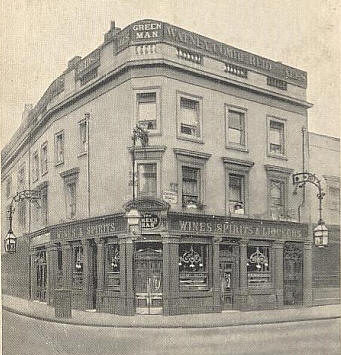
The Green Man, 1851-1862
“The Green Man Wine-Vaults, Edgware-road, with the Stable-yard and Premises adjoining, producing a large improved Rental.
Messrs. Warlters, Lovejoy, and Son are instructed by the Executors of Richard Lowe, deceased, to offer for unreserved Sale, at Garraway’s, on Monday, August 18, at 12, the Lease, Goodwill, and Possession of the above very valuable Property, standing at the corner of Bell-street, in the very heart of the best neighbourhood for retail trade in the vicinity of London. The situation has hitherto been untried, but in the hands of a competent man there can be no question it would command the largest and best business possible to be done in that locality. It has the important advantage of being rent free, with an improved rental of 62l. 18s. coming in. May be viewed, Particulars had on the premises; at Garraway’s; of Messrs. Selby and Mackeson, 59, Lincoln’s Inn-fields; and of the Auctioneers, 55, Chancery-lane."

The Death of Joseph Richardson Snr., 1855
“The Morning Advertiser of the 17th inst. (April), contained a record of the death of Mr. Joseph Richardson, a Cumberland worthy, whose abilities as a musician, and remarkable discoveries we many years ago made known to our readers. He died at his residence Edgware Road, London, at the age of 66 years. He was a native of the parish of Crosthwaite, Keswick, where he worked at his trade as a mason for many years. While plying his calling he commenced to study the musical properties of stones, and by great labour and perseverance at last succeeded in producing a combination which afterwards became famous as the Rock Band, with which he has since travelled the country far and wide, and has everywhere drawn forth the eulogiums of musical critics. He was also the inventor of the Bell and Steel bands, but little if any less wonderful than the stone one, on which his three sons are very efficient and tasteful performers. The perfecting of the Rock Band, cost Mr. Richardson an immense amount of labour and entailed upon him and his family considerable privations during a period of no less than 13 years. At length, however, his perseverance was rewarded with the most unbounded success, and he produced an instrument from which, to adopt the language of a former notice, the softest tones of the flute, the sweetest tones of the piano, the shrillest pipings of the fife, and the loudest and most sonorous peals of the organ can be sent forth with a rapidity which produces the most ravishing sensations and fills the mind of the listener with wonder and delight. During the decline of his life Mr. Richardson was in comparatively affluent circumstances.”

The Kensal Green Obelisk, 1888
"In memory of Joseph Richardson Formerly of Underskiddaw, Keswick, Cumberland The inventor of the instruments of the Rock, Bell and Steel Band Died 8th April 1855, aged 65. Samuel Richardson Died 2nd March 1888, aged 63.
Also to Elizabeth wife of Joseph Richardson Died 18th November 1866, aged 69 And of their daughters Dinah 7th March 1877, aged 51 Ann 30th June 1900 aged 82 Mary 23rd November 1884 aged 53 Sarah 21st October 1905 aged 72”. On the right side: “Also of the sons of Joseph and Elizabeth Richardson Robert 6th May 1862 aged 34 John 11th February 1872 aged 53 Joseph 28th October 1876 aged 53 Samuel 2nd March 1888 aged 63."
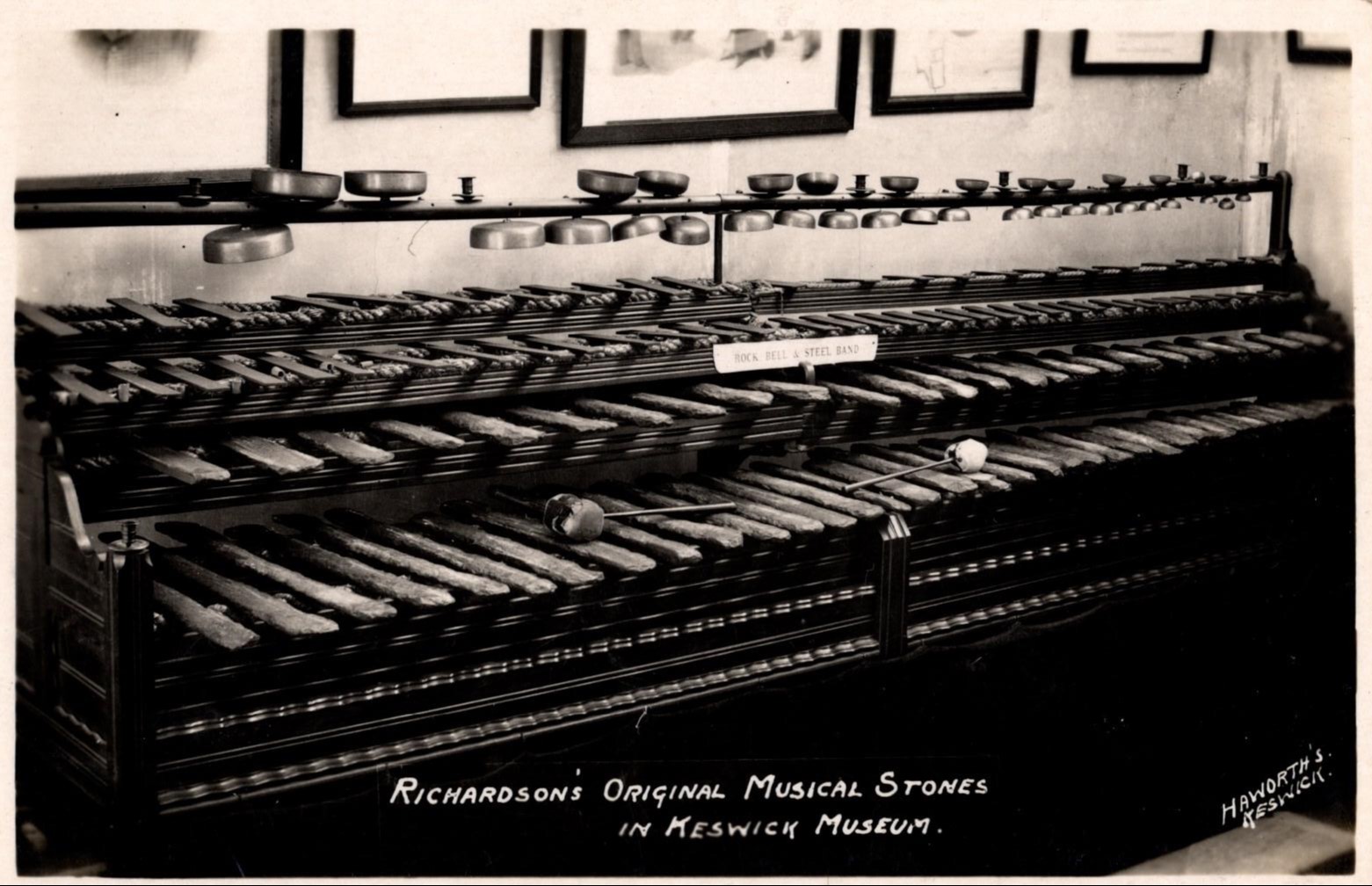
The Donation, 1917
"Mr. R. Henderson, Keswick, offered the trustees the set of five octaves of musical stones, collected by Richardson, of Keswick, early in the last century. The Chairman (Canon Rawnsley) said that Peter Crosthwaite was the first introducer of musical stones, as he found six, already tuned, in the river Greta at Keswick as far back as 1785 and by searching, testing, and chipping he completed two octaves. - The offer was accepted."
“Let not those who may call in and see the relic in the Keswick Museum regard it merely as a musical curiosity, but think of it as a monument of the patient and persevering skill of the man who carved out the rock from Skiddaw and made it serve his musical genius.” (Arnold James Henderson, 1936)

The American Offer, 1936
“That
familiar story of the unknown virtuoso who is discovered playing his instrument
in some remote backwater in the Provinces and is promptly offered fame and
fortune has just come true at Keswick, I hear. The only departure from the
tradition is that the virtuoso refuses to accept the fortune.
He is the curator of the Keswick Museum – a disabled ex-Serviceman, Mr. William Davey – and he is an expert player on the famous musical stones made from Skiddaw slate and kept in the Museum. He can, and will, render anything from jazz to grand opera on the stones, and has already, in the past, had offers from British, American and German theatrical syndicates, who wanted him to make another set and go on tour with them. But he has refused them all.
This week he was sent a cutting from an American magazine describing the stones together with an offer for a tour of America. The fame seemed probable and the terms of the offer showed that the fortune was certain. But that offer, too, has been refused so anyone who wants to hear the musical stones of Skiddaw will still have to make the journey to Keswick.”







